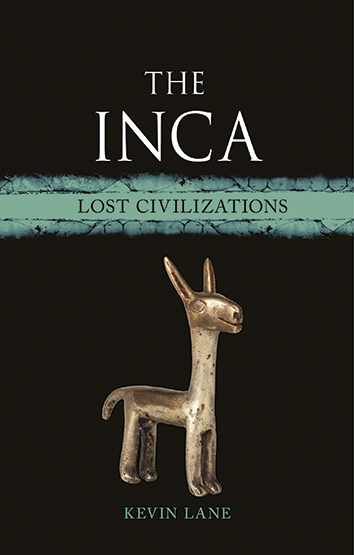
The Incas assembled a massive empire—an extensive though non-territorial polity called tawantinsuyu in their native Quechua language—that spanned the Andean cordillera and its neighbouring environs in South America (c. AD 1350–1570). Archaeologists and historians have long sought to narrativise general histories of the Inca—a difficult task, given the problematical nature of the empirical evidence about the ancient Andes. On one hand, the Incas and their contemporaries did not keep written texts. Primary historical sources on the empire are limited to documents penned by Spanish and native Andean Christians, many of whom distorted our vision of Inca-Quechua social life by introducing European and Christian biases and concepts into their accounts. Consequently, scholars of the Incas are still uncertain about the basic structure of tawantinsuyu, arguing, for instance, about whether the empire was ruled at any given moment by a single king, by dual sovereigns, or by a royal house. On the other hand, because the empire was a short-lived phenomenon in many areas of the Andes, in part due to the Spanish invasion, archaeologists who inquire into the Inca and their works often find it difficult to disentangle local traditions from imperial impositions in different Andean settings. Accordingly, many archaeological accounts of tawantinsuyu rest on elite-centred narratives of the past: they describe the imperial capital of Cusco, its court and its landscape, and then suggest that the Inca regime simply sought to graft this model of society onto other areas. While these texts provide generalised and bird's eye views of political history and imperial expansion, they do so to the detriment of understanding Andean people's diverse experiences of the empire, in particular whether and how they capitulated to, manipulated, or subverted Inca demands.
Kevin Lane's recent book, The Inca: lost civilizations, skilfully navigates these difficult epistemological waters, not only offering a concise synthesis of current academic knowledge about tawantinsuyu, but also a grounded perspective that gives equal weight to both the imperial pomp and the everyday practices that characterised social life during the Inca reign. The book is steeped in a scientific archaeological approach, which largely seeks to understand ancient societies in terms of their efforts to develop the physical environment, their strategies for organising people and society, and the cultural and religious values through which they perceived the world. The book takes a first step to reimagine the domain of the ancient Inca in terms of the people, material things, animals and plants that constituted the diverse landscapes of tawantinsuyu. It takes a sharp turn away from decades-old scholarly trends that predominantly viewed the Inca from centre-outward and from the top-down—that is to say, to examine the empire in terms of their hierarchical rules of royal succession, their policies of economic taxation and exploitation and their resplendent insignia of royal authority. Emphasising the social roles of actors long left out of Inca history (e.g. the women who presided over communities and cities; the llama herders who connected disparate communities; the farmers whose technologies came to be the foundation of the empire), the book changes our perspective on late Andean prehistory, helping readers to see the empire from the vantage point of the very people who, at times, shaped and, at times, subverted the Inca world.
The Inca: lost civilizations is written for a general audience. This is one of its many strengths. Lane's tone and text immerse the reader in the material environment of the ancient Inca world, fostering an appreciation for the foods and the fields, and the animals and the animate things that defined ancient Andean lives and landscapes. Lane's stylistic and highly readable prose helps the reader to appreciate the multiple scales of social life within tawantinsuyu, from the monuments of the imperial elite to the villages of the common farmer. His descriptions of the intricate stepped terracing at Inca royal estates, such as Machu Picchu, are complemented by his discussions of the more local and community-driven (though no less important) constructions, such as high-altitude water dams, camelid corrals and agricultural bench terraces. Furthermore, Lane's rich text emphasises the agency of the long-neglected material and non-human elements of the Inca world, calling attention to the social histories and symbolic values that can be seen through a close examination of the ‘humble potato’, the ubiquitous llama and the cascading waters of glaciated mountains. To be clear, Lane does not just dwell on these things and beings in an effort to paint a lusher and richer picture of the Incas and their environment. Rather, he foregrounds these material elements in order to advance an argument that many Incas and Quechua-speakers of the Andes would immediately acknowledge: that non-human things and beings are not simply resources for human use and consumption; they are recognised as actors, who play key social roles in human communities. A seasoned scholar of the ancient Andes will likely want more information in support of these arguments, but this is a book written for those not familiar with the Andes or the Incas. The Inca: lost civilizations stands apart from its peers because it is a text that immerses the reader in the material and ecological world of the Inca and their contemporaries, while simultaneously creating a solid foundation for further scholarly exploration of the ancient Andes. The book will fit perfectly into introductory (university or other) courses on the archaeology and history of the Indigenous Andes and Americas.


